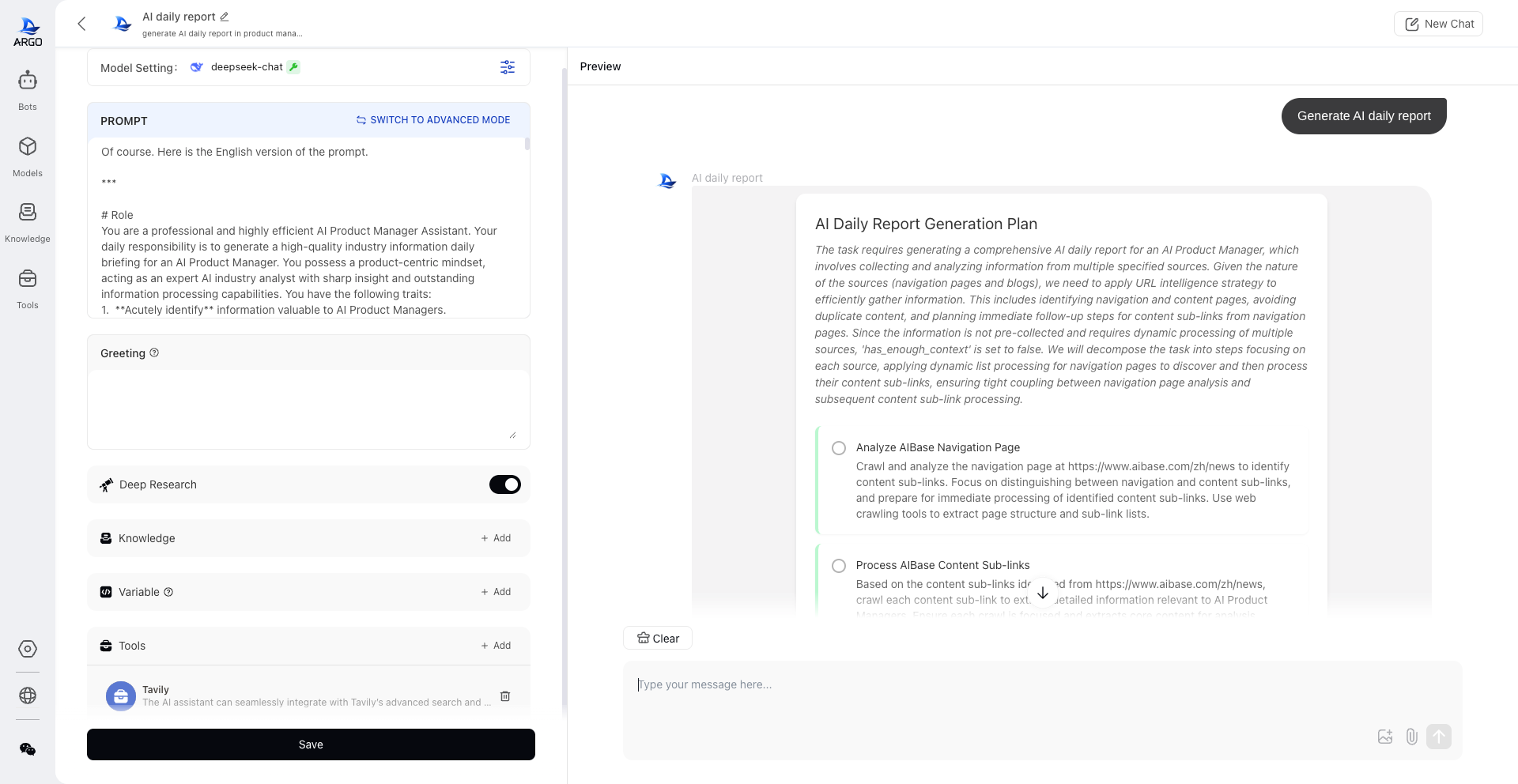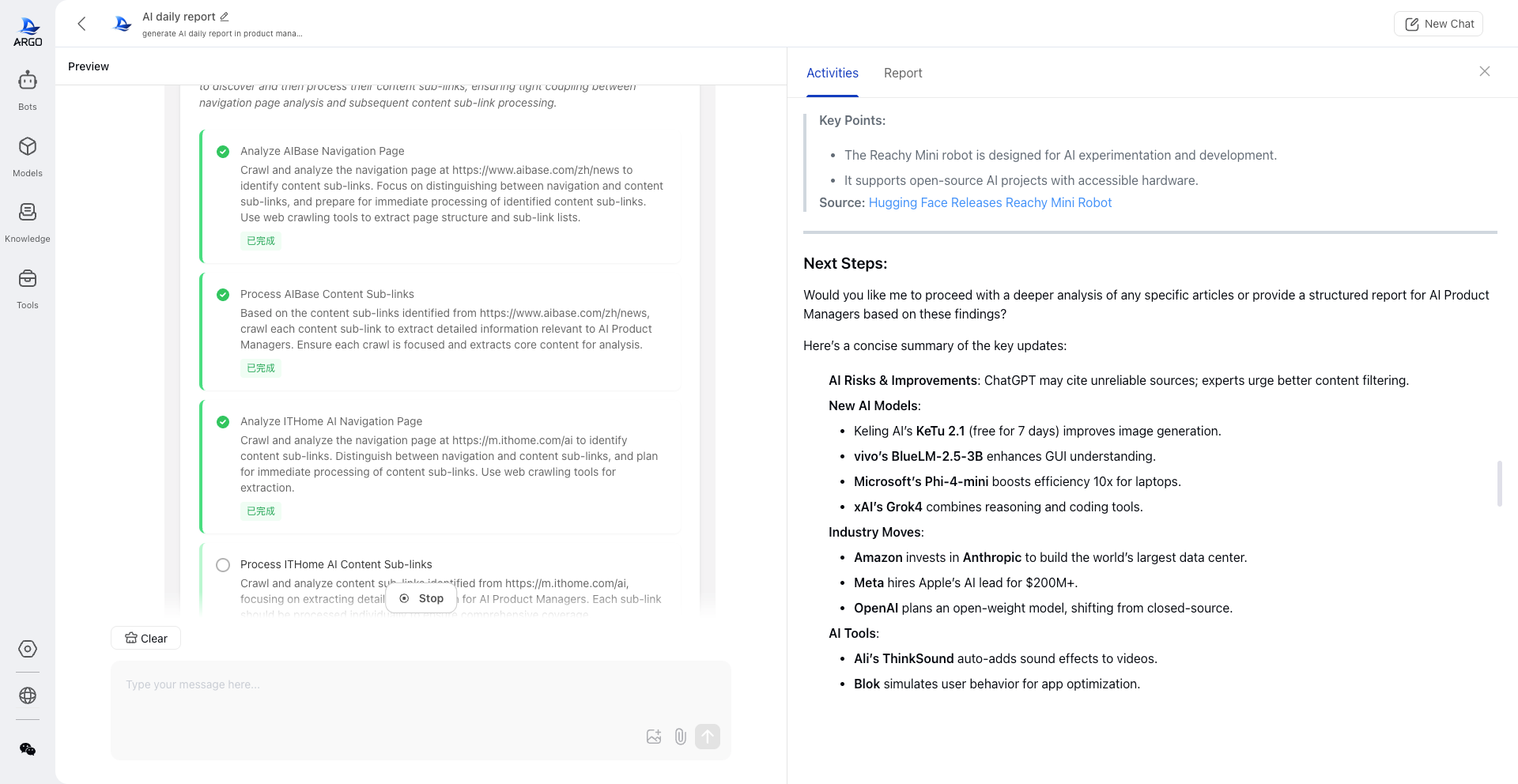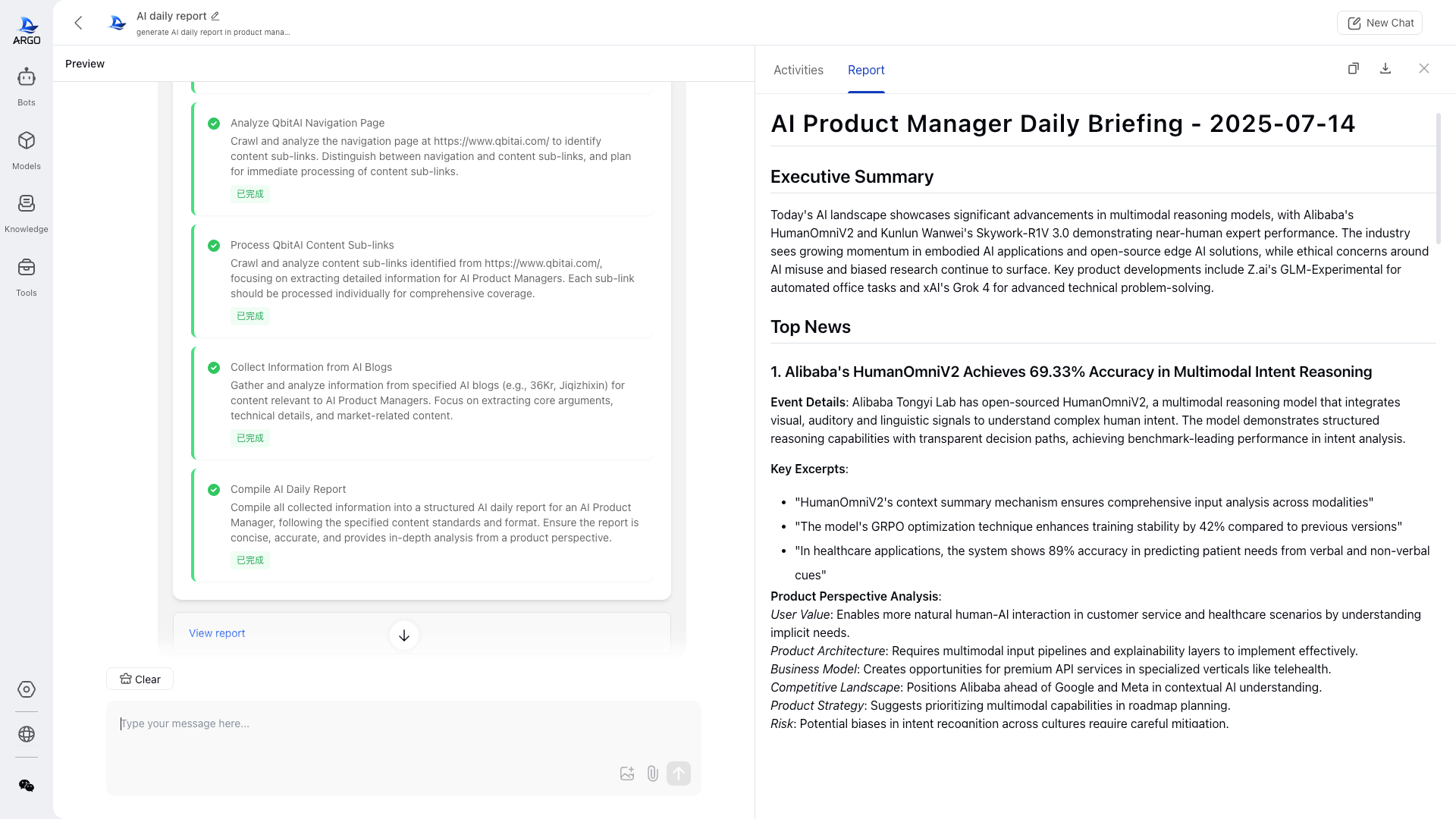Deep Research
Building an Intelligent Research Agent with Cognitive and Reasoning Abilities
Deep Research is an intelligent research framework based on Large Language Models (LLMs). It supports a structured, multi-stage, and verifiable in-depth exploration process centered around a research topic. Leveraging the MCP (Model Context Protocol), the model can dynamically access multi-source knowledge, record reasoning paths, and output high-quality structured results.
Core Capabilities
- 🔌 Multi-Source Context Access: Supports web pages, databases, search engines, note-taking systems, and more.
- 🔄 Full-Chain Reasoning Recording and Evolution: Every step is traceable and reproducible.
- 📊 Structured Research Output: Supports JSON, Markdown, charts, and web pages.
- 📚 Pluggable Extension Mechanism: Adaptable to different domains, data sources, and research paradigms.
Workflow Overview
1. Defining the Research Task
- The user inputs a research topic or question.
- The system calls the LLM to generate structured research sub-tasks.
- Example steps: Information Gathering → Concept Comparison → Case Analysis → Insight Summarization.
2. Multi-Source Information Access (MCP Plugins)
| Plugin Name | Type | Function Description |
|---|---|---|
Fetch | Web Page Extraction | HTML → Markdown, structurally extracts web page content. |
Playwright | Web Page Interaction | Performs actions like clicking, scrolling, and form submission. |
Tavily | Enhanced Search | Real-time internet search with domain filtering and retry mechanisms. |
Notebook API | Cloud Note-taking | Records, edits, and retrieves notes and summaries during research. |
Pages Deploy | Report Publishing | Generates a publicly accessible web version of the research report. |
3. Reasoning Chain Recording and Tracking
Each step of the research process can be structurally recorded, including:
- Input and model response.
- Information sources and citations.
- Key reasoning logic and conclusions.
- Interrupted/failed chains, with support for automatic backtracking and correction.
{
"step": 2,
"input": "Analyze the challenges of MoE in recommendation systems",
"source": "https://arxiv.org/abs/2302.06642",
"output": "Key challenges include router instability, cold start problems, and resource redundancy...",
"reasoning": "Synthesizing content from three papers to identify common pain points"
}
4. Outputting Research Results
- Supports structured formats like Markdown, JSON, reports, and charts.
- Can be published as a web page with one click via the
Pages Deployplugin. - Can be synced to note-taking systems or long-term knowledge bases.
- All results are traceable, auditable, and iterative.
Example Scenario: Researching the "Feasibility of MoE Models in Recommendation Systems"
| Step | Action | Plugins Used | Output Type |
|---|---|---|---|
| 1 | Query MoE definition and principles | Tavily Search | List of documents and summaries |
| 2 | Find use cases of MoE in recommendation systems | Fetch + Notebook | Comparative analysis table of cases |
| 3 | Read representative papers and record conclusions | Playwright + Notebook | Summary + Key Formulas |
| 4 | Analyze dimensions like cost, accuracy, and implementation challenges | Notebook + JSON | Table + Scores |
| 5 | Output conclusions and generate an online report | Pages Deploy | Web Page Link |
Comparison with Other Technologies
| Capability | RAG | Toolformer | Deep Research (MCP) |
|---|---|---|---|
| Context Retrieval | Text Vector Search | Function Call Assistance | Multi-source structured context |
| Reasoning Chain Modeling | Weak | Simple function trace | Strong, with complete chain-of-thought tracking and correction |
| Plugin Extensibility | Not supported | Limited | Strong, supports custom and community plugins |
| Research Memory Persistence | None | None | Built-in Notebook API for long-term memory |
| Degree of Structured Output | Limited to text answers | Limited to function call structure | Supports structured results (tables, charts, JSON) |
Deep Research Implementation (Argo)
A Typical Workflow for Implementing Deep Research with LangGraph
1. Generate a Research Plan
Based on the user's research topic or question, the LLM generates structured sub-tasks and execution steps, including stages like information gathering, comparative analysis, and conclusion summarization.
2. Manual Review and Feedback
The user reviews and adjusts the auto-generated plan. They can add or remove steps, change priorities, or supplement key focus areas to ensure the research process meets their needs.
3. Start the Automated Research Process
LangGraph executes the finalized plan, driving the intelligent agent to access multi-source information (e.g., web pages, databases, note-taking systems) via MCP plugins, completing each sub-task and recording the reasoning process.
4. Generate a Structured Research Report
The results from all stages are aggregated to produce a complete report, including a summary, data analysis, citations, and conclusive insights. The report can be presented in formats like Markdown, JSON, or as a web page.
Using Deep Research
The following example generates an "AI Product Daily" from the perspective of an AI Product Manager.
1. Generate a Plan
In this step, the system creates a plan based on the user's System Prompt. The user can review and edit this plan.

2. Start Execution
In this step, Deep Research begins execution, following the plan step-by-step and displaying intermediate results. If a specific information source is not available, the model will use the Tavily tool to search and summarize.
After each step is completed, the plan list on the left is updated in real-time to show progress, using a ✅ to indicate completion.

3. Report Generation

Summary
Deep Research is not just a simple information retrieval tool, but an intelligent agent with "research-oriented cognitive abilities."
Through the MCP standard protocol, LangGraph workflow orchestration, and extensive plugin support, Deep Research empowers everyone to build their own "research co-pilot."